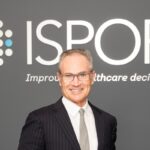PROTECT YOUR DNA WITH QUANTUM TECHNOLOGY
Orgo-Life the new way to the future Advertising by AdpathwayOver the past year, several global biopharmaceutical firms have substantially reorganized their health economics and outcomes research (HEOR) groups. Specifically, the leaders of the groups have been let go and the balance of the teams have been dispersed into other functions, typically Market Access or Medical Affairs. Corporate reorganizations are nothing new, but the targeted reorganization of HEOR groups comes at a time of significant change in the operational and competitive landscape for biopharma. Regulatory expectations for evidence are both increasing and broadening (clinical, economic, patient-centered), the use of artificial intelligence (AI) and digital tools in healthcare is growing, and there is a palpable push for acceleration in drug development.
At the same time, patients are clamoring for accessible, affordable, and effective drugs. Too many patients cannot afford the drugs or treatments that would enhance their quality of life – or even save their life. Globally, the story is much the same. Populations are aging in many countries and the demand for novel medicines is on the rise. To obtain coverage or reimbursement, companies have to prove that their products both improve on the standard of care and are more cost effective.
Clearing this “fourth hurdle”, as it is often called, in a restrictive access landscape has never been more important, or difficult, for biopharma. The Inflation Reduction Act in the US, the European Union’s HTA regulation and Germany’s SHI regulation are all recent examples of a more stringent regulatory environment with heightened evidentiary expectations. The recent round of layoffs and restructuring of HEOR groups may be particularly ill-timed, because there is truth to the adage that “there is no access without evidence.” HEOR scientists are the primary generators of that evidence.
The development of a new drug is a costly and time-consuming process – 10-15 years or more – and it is natural that business leaders want reasonable assurance that their investments will yield a positive return. Done well, HEOR is the bridge connecting drug development and clinical trial design on the one hand, with access and revenue on the other. Payer organizations rely on the evidence of clinical and cost effectiveness provided by HEOR to decide if the new drug or device should gain market access – and at what level. US healthcare decision makers can place restrictions on access (prior authorizations, step-therapy edits, and so on) based on the strength of the evidence package. The same is true for clinicians; real-world evidence (RWE) provided by HEOR is playing an increasingly important role in clinical decision making and guidelines development.
Yet recent layoffs suggest that despite being key to drug development and market access, HEOR remains underappreciated. This has the potential to create a significant social opportunity cost if drugs that might otherwise improve patient lives are delayed getting to market because of a failure to generate the appropriate evidence, or clinicians do not have the benefit of that evidence to inform their decisions. This is especially true if the HEOR function becomes merely an extension of market access or medical affairs functions within biopharma. It might save budget dollars in the short term but is akin to being penny wise and pound foolish.
True, it is costly to curate patient-reported outcomes, complete retrospective studies, or undertake economic analyses, but this investment returns the critical evidence that will increasingly be required by formulary decision makers and health technology assessment (HTA) bodies. The way ahead for HEOR in biopharma should be built on increasing C-suite visibility and understanding of the value contribution that HEOR makes and demonstrating that a failure to invest in HEOR puts companies at a competitive disadvantage, especially in the face of rising regulatory and payer expectations for evidence.
How to do this? As a first step, the HEOR profession, of which I am a passionate advocate, should acknowledge that it has fallen short of consistently demonstrating value in a company setting because of its emphasis on science and methods versus revenue generation. Lest anyone think this an apocryphal statement, I want to emphasize that science and methods are still fundamental – they just are no longer enough. The finish line for our profession has moved and we need to move with it.
Specifically, HEOR needs to show that it cares about – and can meet – the needs of the biopharmaceutical company. I can’t escape the feeling that the recent layoffs took place, in part, because HEOR is viewed as a “nice to have” not a “must have.” When was the last time HEOR champions briefed company leadership on how fast evidence could be generated, or how data science and applied modeling techniques could accelerate access – and positive decisions – with HTA bodies, formulary decision makers, and regulators? In addition to rigorous, unbiased science and evidence generation, HEOR professionals need to translate that science into rock-solid business case language and show how it contributes to overall company performance. This hasn’t been an arrow in the HEOR quiver, but it needs to be.
C-suite decision makers need to see that it is precisely because HEOR uses different data sources and different research methods that it is able to fast-track the production of necessary and valuable evidence. HEOR also communicates evidence differently and to different audiences than medical affairs or market access experts, and it addresses the quantitative business of supporting pricing and volume ambitions – a critical role and source of value.
As an example, in 2007, Pfizer and Bristol-Myers Squibb began development of apixaban as an anticoagulant. The product we know today as Eliquis® is used to treat and prevent blood clots and prevent stroke in people with nonvalvular atrial fibrillation. It is on the World Health Organization’s List of Essential Medicines and in 2021 was one of the most commonly prescribed medications in the United States with more than 17 million prescriptions. What is less well known is that Eliquis’ global success revolved around the RWE generation and access strategies that were carefully designed and executed by HEOR scientists. The same is true for antiretroviral therapy for HIV in the United States. The use of three or more antiretroviral medicines – commonly called the HIV “cocktail” – is currently the standard treatment for HIV infection largely due to the HEOR cost-offset and budget projection work enabling appropriate funding of drug assistance programs at national and state levels. More generally, HEOR has been instrumental in label expansion – demonstrating the clinical and financial efficacy of a product developed for one patient population in another, thereby growing the overall market and revenue share for biopharma. The common denominator in each of these stories is the confluence of positive patient outcomes and solid financial returns to the companies concerned – enabled because of HEOR.
By leveraging HEOR to improve evidence generation methods and the speed with which they are deployed; by converting health data from sources like wearables and electronic health records into useful evidence that can shape healthcare decisions; and by reaching out to our industry and other partners to better understand their pain points and where HEOR can address them – we can create a healthcare system that is accessible, effective, efficient an affordable for all.
The scientific disciplines that underpin HEOR offer tremendous power, rigor and credibility to C-suite executives if they increase their fluency in it. Among other benefits, HEOR, when done strategically and in the context of a company’s broad business objectives, can pull the right data together to reduce uncertainty.
Moving forward, HEOR needs to be recast not as an academic or purely scientific exercise exclusively, but rather, as a multidisciplinary body of work that can be key agent of innovation in biopharma. HEOR competencies that support innovation include clinical trial design, epidemiology, HEOR modeling, statistics, data mining, collecting and processing statistics and documenting real-world evidence. As companies move towards personalized medicine, cell and gene therapies, and integrated digital and traditional therapeutics, HEOR can assess whether these treatments represent good value for money for various stakeholders, including patients. It can also change how new drugs are developed. If HEOR is used early in drug development, it can point the way to better clinical trial design that shows a drug’s full value. In fact, as big data and AI continue to transform drug discovery, HEOR needs to be – and be seen to be – central to this new paradigm. HEOR is actively incorporating AI capabilities through generative AI and large language models to enhance real-world data analyses, model programming, and literature reviews. These data-driven approaches speed up development – thereby saving considerable development costs – and highlight those drugs that are most likely to yield benefits.
As healthcare shifts to a greater focus on value as opposed to cost, pharmaceutical innovation needs to follow suit. HEOR can help companies show that their new products, drugs or other interventions, offer better outcomes at a fair price. This will be crucial as the industry expands into areas like telemedicine and AI diagnostics. In short, HEOR needs to be seen as critical to any biopharma company that makes choices on where to make significant financial investment in the development pipeline, and equally, how to achieve market access for new products as they move through their lifecycle. Ultimately there is no single (or simple) algorithm that fosters better healthcare decisions, but the multidisciplinary science that is HEOR offers the best chance to move the needle forward. Business leaders need HEOR to show them how to effectively use the evidence and communicate it in a relatable way to key external decision makers. When HEOR operates in this strategically critical way, companies gain a competitive advantage and, more important, patients will achieve better outcomes.
Photo: ClaudioVentrella, Getty Images.
Rob Abbott is CEO and executive director of ISPOR — The Professional Society for Health Economics and Outcomes Research (HEOR), the leading global professional society in the field of HEOR. He is responsible for the Society’s global strategic direction and leadership. Rob has more than 20 years of experience providing executive-level strategic and operational leadership in businesses, nongovernmental organizations (NGOs), government environments, as well as professional societies and associations. He has successfully guided a number of organizations through their transformation and growth. Most recently, he served as executive director and CEO of Health Technology Assessment International, a global nonprofit society focused on health technology assessment (HTA). He is also a pioneering social responsibility thinker and advisor who has authored 2 books and numerous articles on the nature of business and society. Rob holds an undergraduate honors degree from the University of Victoria and graduate degrees from the University of Toronto.
This post appears through the MedCity Influencers program. Anyone can publish their perspective on business and innovation in healthcare on MedCity News through MedCity Influencers. Click here to find out how.


 4 months ago
29
4 months ago
29
















 English (US) ·
English (US) ·  French (CA) ·
French (CA) ·